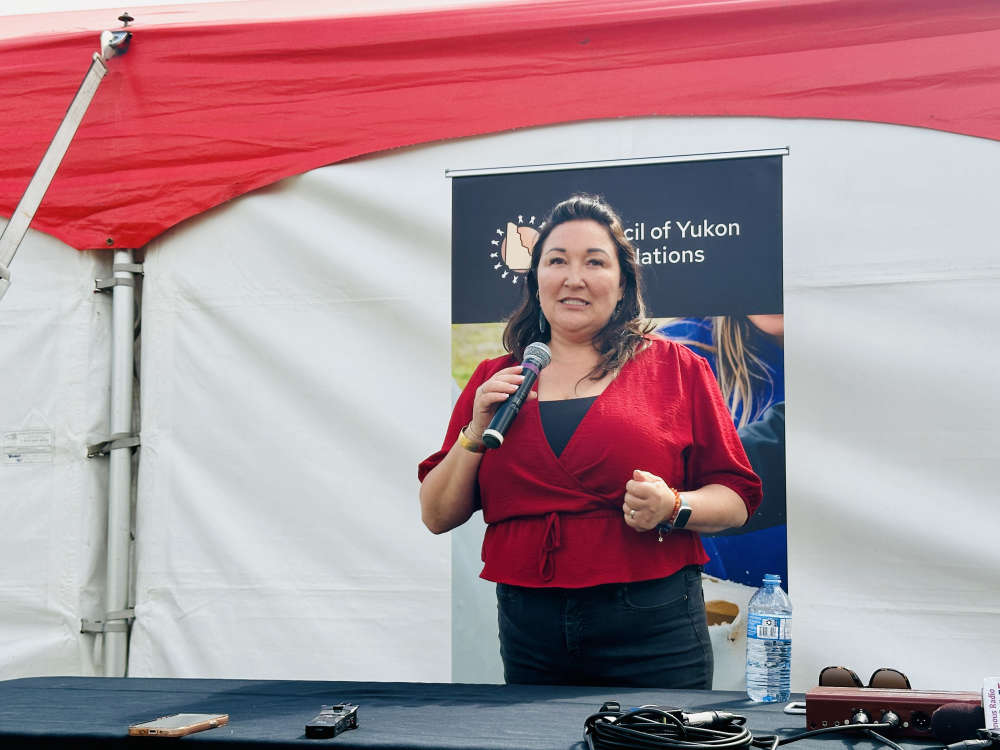
This summer saw the largest flood mitigation effort in the history of the Yukon.
Dr. Benoit Turcotte, Yukon University’s Senior Research Professional in hydrology, says last summer’s flooding throughout the territory is not the worst mother nature can do.
“This is not the full capacity of that system,” he tells CHONfm.
Dr. Turcotte says after studying hydrological information, simply put - the unprecedented high-water levels in the Yukon were caused by high snowpack, a delayed spring, and warm weather. The actual details are a little more complicated though, Dr. Turcotte says multiple rare hydrological events contributed to the flooding.
“There’s water going in and water going out at Lewes Dam and there’s a maximum capacity at Lewes Dam and in Miles Canyon. As a result, if that snow would have melted gradually, well it would have been fine but the weather sequence really caused the input to Southern Lakes to really rise several times more than what the system could evacuate,” says Dr. Turcotte.
He also says it is hard to say whether or not climate change directly caused the flooding because the water system is always fluctuating, citing a spike in water levels back in the 60’s, but global warming definitely played a role.
“If you look at the trends, at least for the Southern Lakes, seeing a high-water level in 2007 used to be the precedented record, and by far,” says Dr. Turcotte.
“Last summer broke that record easily and that system, from our understanding at YukonU, that system could produce even higher water levels,” he added.
At the peak of flooding, Bennett, Tagish and Marsh Lakes all measured more than 20 centimeters over the flood of 2007.
The high water in the territory this summer quickly turned in to the largest flood mitigation effort in the history of the Yukon. A state of emergency for the Southern Lakes, Lake Laberge, Marsh Lake, Tagish Lake and Kusawa Lake was declared in July and lasted until mid September. At one point there were 230 personnel on the ground including one hundred soldiers from the Canadian Armed Forces and seven flood specialists from Manitoba. Over one million sandbags were put in place by hard working volunteers and even bigger walls of sand deemed “superberms” were built along shores.
Dr. Turcotte hopes the Yukon’s water system will give us a break for a few decades so that we can adapt and plan for more floods, even though it is hard to say with confidence how severe they may be. In the meantime, he suggests studying the impact climate change is having on smaller water ways like the Nordenskiold and Klondike Rivers because they are more sensitive to hydrological events.
Flooding can be hard to predict, but Dr. Turcotte says next summer is looking better all ready because this fall has been drier and less snowy than last year.


 Math'ieya Alatini elected CYFN Grand Chief
Math'ieya Alatini elected CYFN Grand Chief
 Watson Lake man charged in firearm robbery
Watson Lake man charged in firearm robbery
 House fire in McIntyre contained
House fire in McIntyre contained
 RCMP plane crash caused by faulty sensor: TSB report
RCMP plane crash caused by faulty sensor: TSB report
 New Fireweed Mental Health unit opens at Whitehorse General Hospital
New Fireweed Mental Health unit opens at Whitehorse General Hospital
 Traditional learning camp opens at Whitehorse school
Traditional learning camp opens at Whitehorse school
 Yukon Schools introduce online registration for bus service
Yukon Schools introduce online registration for bus service
 Yukon Government unveils progress in healthcare transformation with 2024 Putting People First annual report
Yukon Government unveils progress in healthcare transformation with 2024 Putting People First annual report
 Whitehorse Emergency Shelter unveils New Artwork celebrating Yukon First Nations culture
Whitehorse Emergency Shelter unveils New Artwork celebrating Yukon First Nations culture
 Former Whitehorse City Councillor Ted Laking announces bid for Yukon Party nomination in Porter Creek Centre
Former Whitehorse City Councillor Ted Laking announces bid for Yukon Party nomination in Porter Creek Centre
 Yukon Government seeks applicants for new Health Authority Board
Yukon Government seeks applicants for new Health Authority Board
 Canada Post strike looms, Yukoners brace for disruption
Canada Post strike looms, Yukoners brace for disruption
 Driver charged in fatal collision that killed Yukon Government Deputy Minister and injured Minister
Driver charged in fatal collision that killed Yukon Government Deputy Minister and injured Minister
 Yukoners encouraged to apply for Northwestel's Northern Futures Scholarship Program
Yukoners encouraged to apply for Northwestel's Northern Futures Scholarship Program
 City of Whitehorse summer transportation maintenance work underway
City of Whitehorse summer transportation maintenance work underway
 Yukon Government seeks input on new downtown public school
Yukon Government seeks input on new downtown public school
 Indigenous leadership takes centre stage: Rebecca Chartrand and Mandy Gull-Masty appointed to key cabinet roles
Indigenous leadership takes centre stage: Rebecca Chartrand and Mandy Gull-Masty appointed to key cabinet roles
 Whitehorse prepares for Annual 20-Minute makeover
Whitehorse prepares for Annual 20-Minute makeover
 RCMP conducting training exercises on Schwatka Lake
RCMP conducting training exercises on Schwatka Lake
 CYFN makes history as winner of prestigious Arctic Inspiration Prize
CYFN makes history as winner of prestigious Arctic Inspiration Prize